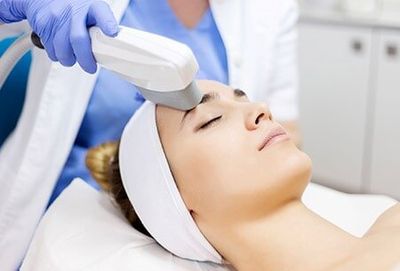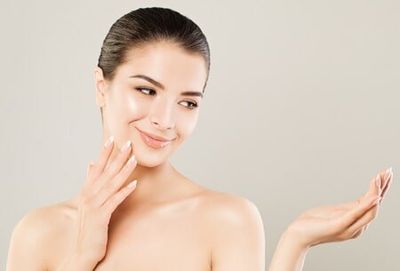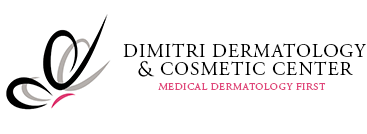SMOOTH BEAM LASER
Smooth Beam Laser
Non-Invasive Rejuvenation Laser
- Acne Scarring
- Active Acne Treatment
- Skin Renewal
- How Smoothbeam Works
SmoothBeam is an advance multi-effect non-ablative* laser treatment applicable to acne scarring, active acne and collagen loss. These quick and comfortable laser treatments are very helpful in reducing active acne and acne scars and reversing some of the collagen-building process by a burst of laser light which creates heat beneath the skin surface.

Acne Scarring: Improving and Reducing Acne Scars
By triggering the production of new collagen, the SmoothBeam spurs the body to partially life acne scars "from the inside out" with the new collagen base. SmoothBeam is a totally non-invasive laser. Non-invasive (non-ablative) lasers do not burn, cut or remove the skin surface. Instead, their action occurs underneath the outer layers of the skin. Because the laser works at a deep level you won't experience any significant pain or peeling.
Special Cooling Features For Treatment Comfort
The SmoothBeam Laser employs a revolutionary, patented process with DCD (Dynamic Cooling Device), This device first deep-cools the area of skin to be treated with a short blast of cryogen spray which protects the epidermis. This is instantly followed by the laser beam which targets the upper dermis.
This combined cooling/heating process protects the outer layer of skin while allowing the heat to reprogram the collagen-building process within the deeper layers of your skin. The scars are then filled in from the "inside out" by the production of this new collagen. Multiple treatments are necessary to stimulate the collagen and minimize the acne scars.
Is SmoothBeam The Best Choice For Acne Scars?
Nonablative lasers like SmoothBeam have their place and are a good choice for those who are averse to any downtime. Newer laser, especially the Fraxel laser systems, produce a more marked response. But will depend on the level of treatment, produce redness and sometimes swell still, the special nature of Fraxel makes it the leading laser in acne scar reduction.
Active Acne Treatment: Improving Active Acne
Because the SmoothBeam actually alters the function of the oil-producing sebaceous glands. active acne is greatly reduced. Less acne translates to less future acne scarring. SmoothBeam is frequently used in combination with Vbeam laser treatments to reduce redness from acne scars. In 2010, a new Acne Laser System came on the market and is making great strides in helping control acne. The isolaz acne laser uses suction and bacteria-killing light to remove the "food source" for acne bacteria and kill the present acne bacteria within and around the follicle.
Results may vary for each patient and each laser system; you should discuss your expectations with Dr. Pilest. Serveral treatments may be required. Depending on anatomical location and the extent of desired results.
Skin Renewal/Reducing Fine Wrinkles
Wrinkling is caused by loss of collagen and elastin in the skin. SmoothBeam's technology causes the body to reactivate production of collagen to areas that have lost their "fill" (wrinkles). This new collagen improves the skin's elastic capabilities and overall tone. SmoothBeam helps your skin feel firmer, smoother, and show fewer fine wrinkles.
Understanding How SmoothBeam Works
SmoothBeam's patented LASR* (Laser Assisted Skin Renewal) process provides skin renewal by combining two unique elements: 1. A gentle laser pulse that stimulates the formation of new collagen just beneath the surface of your skin. 2. A proprietary Dynamic Cooling Device (DCD) that sprays the upper layer of your skin with a fine mist of cryogen prior to, during, and after the laser pulse, cooling and protecting the surface of your skin. Each pulse cycle of cooling and heating occurs within a second, making the process fast and comfortable.
How Long Does A SmoothBeam Laser Treatment Take?
One of the most exciting aspects of SmoothBeam Technology is that it allows laser treatment in short "lunchtime" procedures. Treatments generally take 10 to 30 minutes. After your treatment, you can go right back to work or out to dinner without anyone knowing you've had treatment. Or, if you like, you can choose more aggressive treatment. The number of treatments and interval of treatments vary depending on the severity of the condition and the extent of the improvement desired.
What Will The Procedure Itself Be Like?
You and the doctor will wear safety glasses to protect your eyes during the procedure. The doctor will use a small handpiece with a probe that touches your skin to deliver the laser light. You will feel the light spray of coolant onto your skin during each laser pulse.
Is There Any Pain Involved In Laser Treatment With SmoothBeam
Because the Lasers Dynamic Cooling Device is so effective. Many patients report the procedure as "mild", with little more than a slight snapping or tingling sensation. Of course, pain is subjective, and topical anesthetics can be used. If you prefer.
How Long Before I See Results?
Several treatments may be required. Depending on anatomical location and the extent of desired results.
What Precautions Should Be Taken Before And After Treatment?
Avoid sun exposure for 4-6 weeks before treatment, and again after treatment until your physician allows it. Care should be taken in the first few days following treatments to avoid scrubbing or rinsing the treated area with abrasive skin cleaners.
Are There Any Side Effects To Treatment With SmoothBeam?
In general, most procedures have a low risk of side effects. More aggressive treatments might induce some temporary discoloration or reddening of the skin. Some patients might experience pigment changes in skin color. If this occurs, the skin will typically return to normal pigmentation over time.
Intense Pulsed Light Therapy
What Is Intense Pulsed Light Therapy?
Intense pulsed light (IPL) or Flashlamp Therapy is a non-invasive and non-ablative treatment that uses high-intensity pulses of visible light to improve the appearance of the following skin problems:
- Vascular Lesions including spider angiomas, port wine stains, broken facial veins, rosy cheeks rosacea and red thread veins of the legs
- Freckles and Age Marks
- Facial Lines and Wrinkles
- Removal of Unwanted Dark Hair

The procedure of rejuvenating aged skin is referred to as Photorejuvenation and requires a series of IPL treatments. IPL may also be helpful for mild to moderate acne and stretch marks.
How Does It Work?
IPL systems work on the same principles as lasers in that light energy is absorbed into particular target cells with colour (chromophores) in the skin. The light energy is converted to heat energy, which causes damage to the specific target area. IPL systems are different to Lasers in that they deliver many wavelengths (or colours) in each pulse of light instead of just one wavelength. Most IPL systems use filters to refine the energy output for the treatment of certain areas. This enhances penetration without using excessive energy levels and enables targeting of specific chromophores (These are skin components that absorb light).
IPL therapy is considered a non-ablative resurfacing technique, which means that it targets the lower layers of skin (Dermis) without affecting the top layers of skin (Epidermis). The results are not as dramatic as ablative resurfacing where both the Dermis and Epidermis are injured to produce a much more noticeable overall outcome. The advantage of IPL theraphy is its minimal downtime - A patient can often have the procedure done in their lunch break and return to work immediately afterwards.
What IPL Machines Are Available And What Do They Do?
There is a range of IPL machines including LumenisI* Quantum IPL* (The successor to PhotoDerm*), EpiLight* and Ellipse*. Individual machines may be individually designed to focus on certain problems but may not be equally effective.
Vascular Lesions
- For the treatment of spider and thread veins, and some vascular birthmarks.
- Light pulses targeted at the red-pigment (Hemoglobin) in the blood which heats and destroys the pigment without affecting the skin or other tissues.
Pigmented Lesions
- For the treatment of spider and thread veins, and some vascular birthmarks.
- Light pulses targeted at the red-pigment (hemoglobin) in the blood which heats and destroys the pigment without affecting the skin or other tissues.
- For the treatment of age spots, freckles, flat pigmented birthmarks and other skin discoloration problems such as melasma/chloasma and Erythromelanosis of the neck (Poikiloderma of Civatte).
- Light pulses targeted at the melanin in the skin's surface which heats and destroys melanin to remove the discoloration.
Hair Removal
- For the treatment of spider and thread veins, and some vascular birthmarks.
- Light pulses targeted at the red-pigment (Hemoglobin) in the blood which heats and destroys the pigment without affecting the skin or other tissues.
- Light pulses targeted at the hair follicle causing the hair to fall out and prevent further growth generally ineffective for light colored hair.
- May be used for hair in any location including underarms, bikini line, face, neck, back, chest, and legs.
What Does The Procedure Involve?
Prior to the procedure your specialist practitioner should explain the process to you and clearly define your expectation of the treatment, they should be able to tell you whether or not the results are you are looking for will be achievable using this method. It is important that the correct diagnosis has been made by your doctor prior to treatment.
IPL treatments are normally straightforward. Make sure the technician has been properly trained and is experienced in IPL therapy
- Avoid sun exposure in the days and weeks before and after treatment.
- A topical anesthetic may be applied to the area but is not usually necessary.
- Cold gel is applied to the area being treated. IPL devices often have integrated cooling systems.
- The smooth, glass surface of the IPL treatment head is applied to the skin, delivering precise pulses of light to the area bein g treated.
- Treatment sessions usually last about 20 minutes. A course of 4-6 sessions every 3-6 weeks may be needed to achieve desired results.
- Most patients can return to work immediately after treatment.
Throughout the treatment session the patient must wear protective eyewear. IPL treatments are relatively painless compared to other facial rejuvenation techniques the sensation has been linked to a light pinch or the snap of a rubber band. Bit some people find it distressing.
Are There Any Side Effects?
- Side Effects are minor and include:
- Pain during treatment (reduced by contact cooling and if necessary, topical anesthetic)
- Skin turning pink and a little sore immediately after the procedure.
- Sensation of a mild sunburn (Redness, peeling, swelling) that may last a few days after treatment.
- Rarely, skin pigment may absorb too much light energy and blistering can occur.
- Sometimes the pigment cells (melanocytes) can be damaged leaving darker or paler patches of skin. White patches or scars are rarely permanent.
- Hair Loss may occur.
- Buising affects up to 10% of patients.

